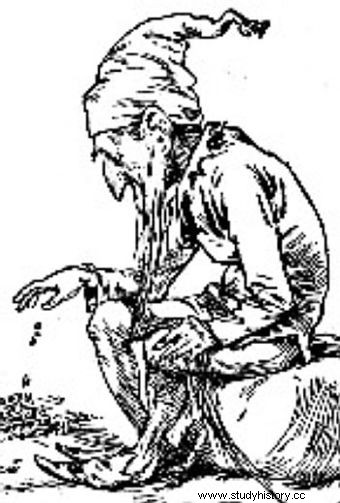
In Irish folklore, there is a supernatural being known as a lone character who lives in remote places like a cave or in the trunk of a tree. Commonly now known as the leprechaun, they have since become synonymous with happiness and treasure.
The leprechaun is a fairy who, according to the History Channel, was irritable and rude little souls, not only known for repairing the footwear of other fairies, but also for being deceitful who used deception to keep people away from their treasure. However, their portrayal in digital media is often a bit more diluted, and their behavior can often be very different.
Around St. Patrick's Day, there are always many movies available that portray the little fairies as happy and lucky characters with great fortune. Darby O'Gill and the Little People and Disney's The Luck by the Irish, are titles that portray them in that form, and in video games a similar theme continues. In arcades, Pot of Gold was a popular game in the 80's, and it played a lot on the Irish themes, with leprechauns a main feature. You can find the same thing on mobile devices today; There's a game called Leprechaun's Luck among Naughty Bingo jackpot titles, which uses the image of the fairy to indicate that things are going your way. On other portable devices, such as the Nintendo Switch, the stereotype plays a big role in the game Job of Leprechaun, even though the character is the hero, not an angry little man guarding gold. He collects lucky four-leaf clovers and helps save his afflicted friend, Eri. Although these are modern interpretations, today we will look at their origins and myths to understand why they are such important characters.
The Origin of the Leprechaun
According to Mythology Source, leprechauns became known as members of the Tuatha Dé Dannan who were from the other world and came down on the Emerald Isle as part of a fleet of 300 ships led by King Nuada, their leader. Upon arrival, Tuatha Dé Dannan burned their ships to hide their arrival, which also meant they could not leave. They were originally known as Lobarcin, which means "little guy with a body."
The first reference known to mention the leprechaun appeared in a medieval tale, Echtra Fergus mac Leti, which tells the story of how the king of Ulster fell asleep and was dragged into the sea by three characters. He defeated the prisoners and gained the upper hand, so the leprechauns gave the king three wishes in exchange for his release, and he could not believe his happiness.
However, others have suggested that they inhabited Ireland before the arrival of the Celts, which has led some to suggest that they are genuine Irish natives and descendants of Irish royals.
Stories of their fortune
These fairies are the only ones who are considered to have a profession, which is shoemaking. They constantly had to repair footwear due to dancing to traditional music, which they played on the tin flute, fiddle and Irish harp. However, their wealth did not come from their trade, as it was said to come from treasures discovered during wartime, which the leprechauns then restored to their former glories. They hid these items from potential thieves and vagabonds in their dark, damp homes.
Leprechaun's Appearance
They have been said to have looked like an old man with a red or white beard throughout history. However, the similarities with the standard interpretation end there, since writers and historians before the 20s often documented that they wore red jackets, not what was more often green. Famous Irish poet and author WB Yeats said that the lonely fairies always wore red; the more common, trooping fairies wore green jackets.
Other legends tell whether leprechauns found in different regions had different clothing styles, although the colors remained the same. Red jacket, white riding breeches and shiny shoes.
The Story of Leprechaun
WB Yeats told a story about a woman who disappeared, apparently driven away by the leprechauns only to return several years later. Although she was in good spirits, she was missing her toes due to dancing so much with the little characters! Leprechauns are also said to be particularly fond of the distilled beverage, Irish poitin, which was distilled illegally, making it equivalent to moonlight, and it is still distilled today. However, several manufacturers now have the license to do so.
Summary
It is easy to see why the more common, jovial representations of the fairy are so widely accepted. The leprechaun fulfilled desires and loved to dance and be happy, but digging a little deeper shows that they were not always the happiest fairies. Their actions were more about self-sufficiency than spreading joy!
However, the myth remains strong in Ireland; whether they are real or not remains unknown, but their history will be discussed for centuries to come.
Featured Image Credit:Wiki FANDOM
